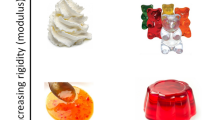Abstract
Changes on the CIELab values of the dyed materials after the different chemical finishing treatments using artificial neural network (ANN) and linear regression (LR) models have been predicted. The whole structural properties of fabrics and some process data which were from fiber to the finishing parameters were accepted as inputs in these models. The networks having different structures were established, and it was also focus on the parameters which could affect the performance of the established networks. It was determined that we could successfully predict the color differences values occurring on the material after the finishing applications. In addition, we realized that some ANN parameters affected the prediction performance while establishing the models. After training ANN models, the prediction of the color difference values was also tried by linear regression models. Then, extra ANN models were established for all outputs using the parameters as inputs in the LR equations, and the prediction performances of both established models were compared. According to the results, the neural network model gives a more accurate prediction performance than the LR models.
Similar content being viewed by others
References
M. Kanık and A. Çelikbilek, Tekstil Maraton, 3, 21 (2002).
J. Wiener, R. Chvalinova, and H. Fischer, “Influence of Wool Fiber Fineness on Coloration Properties”, The Symposium on TEXCSI Liberec, 2003.
H. Gabrijelcic and K. Dimitrovski, Fibres and Textiles in Eastern Europe, 12, 32 (2004).
A. T. Özgüney, C. Taskın, D. S. Kretzschmar, A. Özerdem, P. Gürkan, G. Özçelik, and B. Baykaldı, “Kompakt ve Konvansiyonel Ring İpliklerden Dokunan ve Örülen Kumaşların Boya-Baskı İşlemleri Öncesi ve Sonrası Özelliklerinin Karşılaştırılması”, Project No: TAM 2003-04, p.191, 2005 (in Turkish).
S. D. Kretzschmar, A. T. Özgüney, G. Özçelik, and A. Özerdem, Text. Res. J., 77, 233 (2007).
A. Çay, R. Atav, and K. Duran, Fibres and Textiles in Eastern Europe, 15, 91 (2007).
G. Özçelik and K. Duran, Tekstil ve Konfeksiyon, 4, 242 (2004).
J. H. Xin, Y. M. Lam, S. M. Ng, K. K. Chan, C. S. Lee, C. T. Chan, and S. K. Cheung, “Proceedings of the 6th Asian Textile Conference”, pp.22–24, 2001.
M. Mangut, B. Becerir, and H. R. Alpay, Indian J. Fibre Text. Res., 33, 80 (2008).
M. Senthilkumar and N. Selvakumar, Indian J. Fibre Text. Res., 32, 126 (2007).
A. Majumdar, P. K. Majumdar, and B. Sarkar, Indian J. Fibre Text. Res., 29, 157 (2004).
S. N. Subramanian, A. Venkatachalam, and V. Subramaniam, Indian J. Fibre Text. Res., 32, 409 (2007).
R. Beltran, L. Wang, and X. Wang, Text. Res. J., 74, 757 (2004).
R. Chattopadhyay, Indian J. Fibre Text. Res., 32, 409 (2006).
V. K. Yadav and V. K. Kothari, Indian J. Fibre Text. Res., 29, 149 (2004)
S. Ertuğrul and N. Uçar, Text. Res. J., 70, 845 (2000).
N. Uçar and S. Ertuğrul, Fibres and Textiles in Eastern Europe, 15, 58 (2007).
M. Tokarska, Text. Res. J., 74, 1045 (2004).
I. Frydrych, G. Dziworska, and M. Matusiak, Fibres and Textiles in Eastern Europe, 11, 31 (2003).
E. K. Çeven, Ö. Özdemir, and L. Dağkurs, Indian J. Fibre Text. Res., 31, 501 (2006).
S. Westland, L. Lovine, and J. M. Bishop, Proceedings of SPI, 4421, 745 (2002).
J. M. Bishop, M. J. Bushnell, A. Usher, and S. Westland, “Application of Artificial Intelligence in Engineering VI”, p.423, 1991.
J. Warren, E. Kovacs, and G. A. Berkstresser, Text. Res. J., 63, 545 (1993).
S. Rautenberg and J. L. Todesco, International Work-Conference on Artificial and Natural Neural Networks-IWANN, 1607, 887 (1999).
A. A. Tsoutseos, A. Plıakas, G. Toskas, and C. M. Boussıas, “A Comparative Study on the Use of Neural Networks in the Recipe Match Prediction of Textile Dyeing”, www.scholar.google.com, 2005.
M. Senthilkumar and N. Selvakumar, Dyes Pigm., 68, 89 (2006).
O. Balcı, S. N. Oğulata, C. Şahin, and R. T. Oğulata, Fiber. Polym., 9, 217 (2008).
O. Balcı, S. N. Oğulata, C. Şahin, and R. T. Oğulata, Fiber. Polym., 9, 604 (2008).
N. Uçar and S. Ertuğrul, Text. Res. J., 72, 361 (2002).
A. Majumdar, P. K. Majumdar, and B. Sarkar, J. Text. Inst. 97, 429 (2006).
Ç. Elmas, “Yapay Sinir Ağları”, Seçkin Yay_incılık, 2003.
D. Rumelhart, “Learning Internal Representation by Error Propagation”, Vo. 1, p.318, Cambridge, MIT Press, 1986.
B. Krose and P. V. D. Smaget, “An Introduction To Neural Networks”, The University of Amsterdam, 1996.
R. O. Duda, P. E. Hart, and D. G. Stork, “Pattern Classification”, 2nd ed., Wiley, 2000.
O. Balcıand R. T. Oğulata, Tekstil ve Konfeksiyon, 1, 61 (2009).
E. Öner, “Tekstil Endüstrisinde Renk Ölçümü Seminer Notları Adana“, Zaimoğlu Hotel, 2006.
Author information
Authors and Affiliations
Corresponding author
Rights and permissions
About this article
Cite this article
Balcı, O., Tuğrul Oğulata, R. Prediction of the changes on the CIELab values of fabric after chemical finishing using artificial neural network and linear regression models. Fibers Polym 10, 384–393 (2009). https://doi.org/10.1007/s12221-009-0384-2
Received:
Revised:
Accepted:
Published:
Issue Date:
DOI: https://doi.org/10.1007/s12221-009-0384-2




